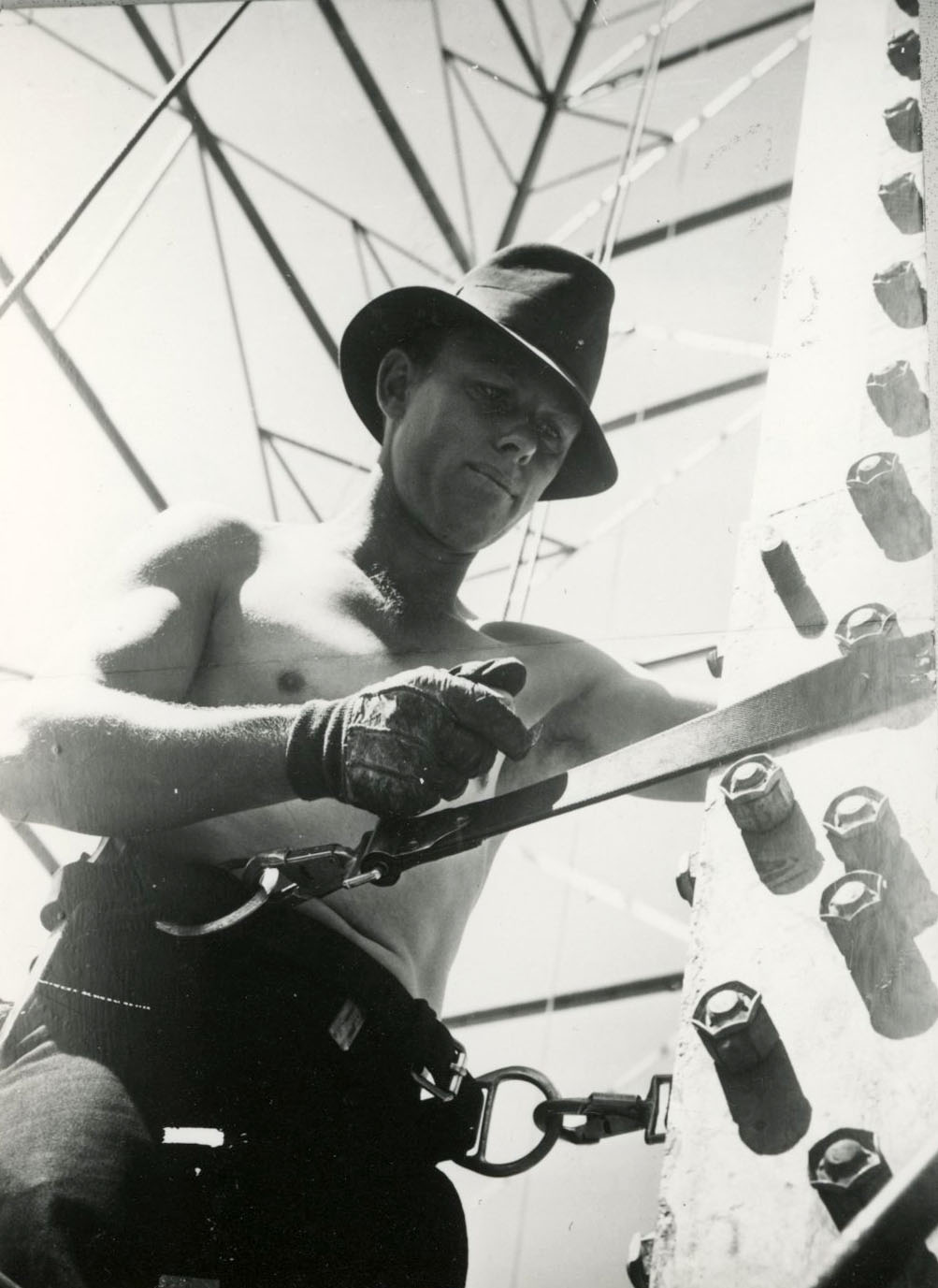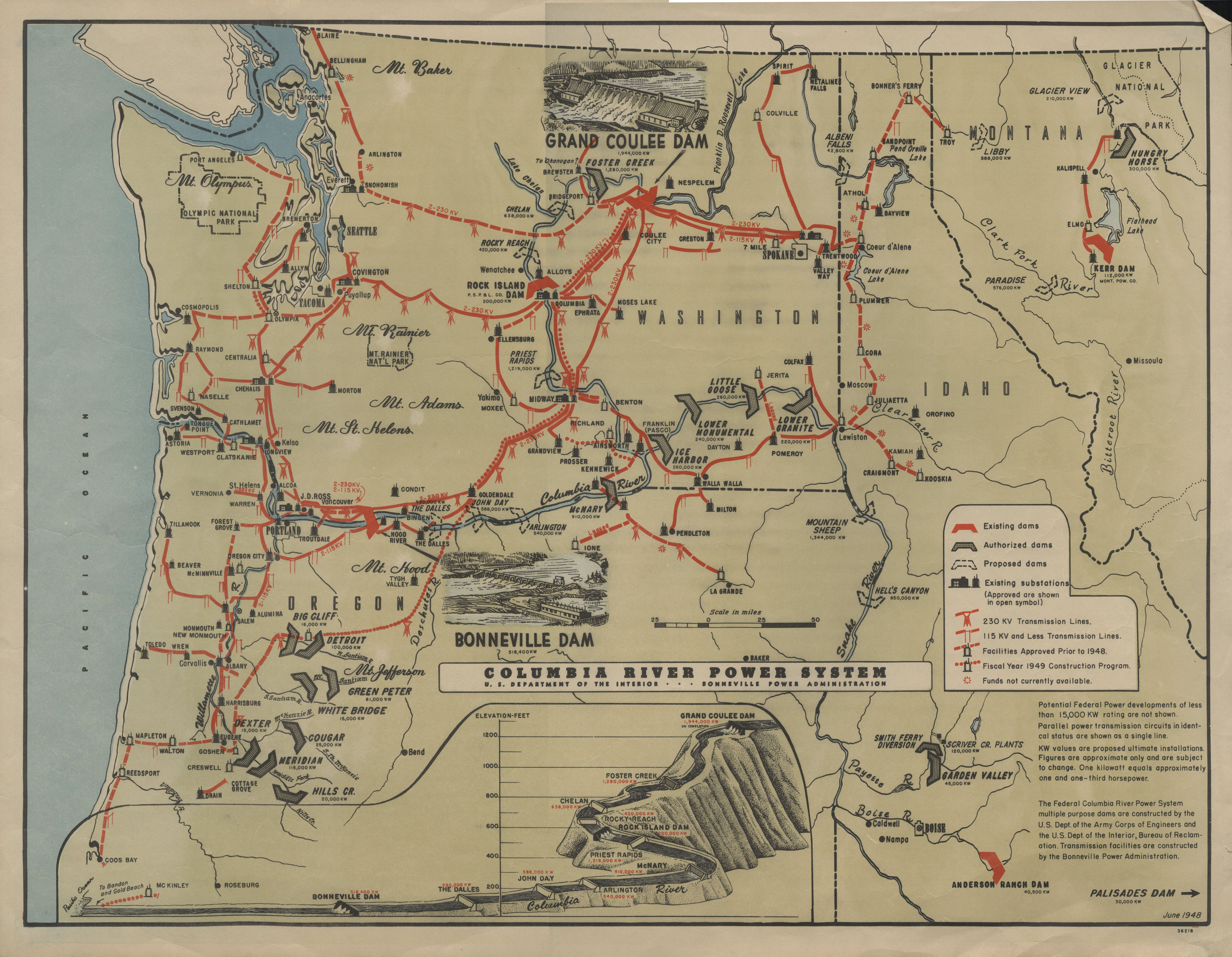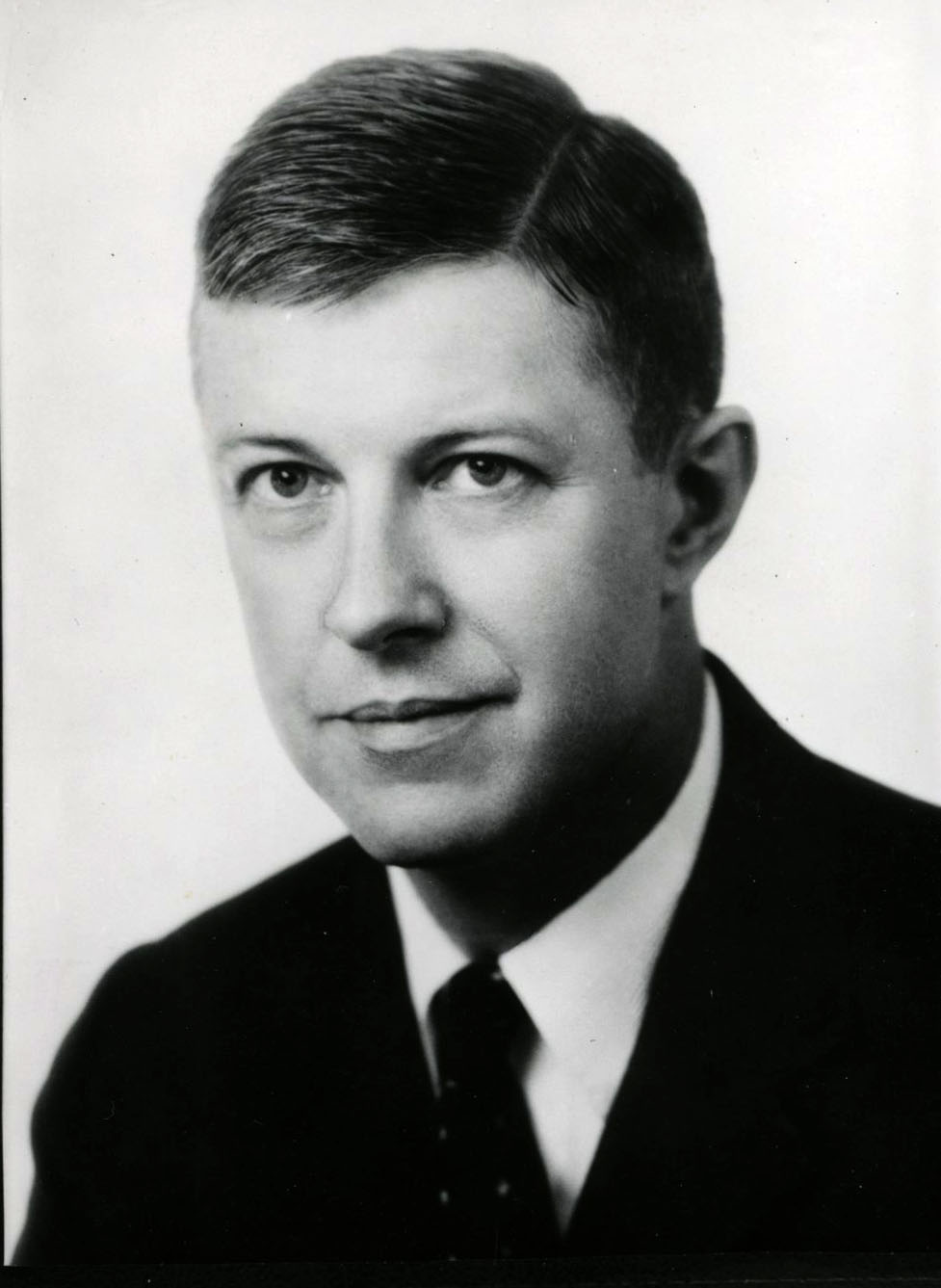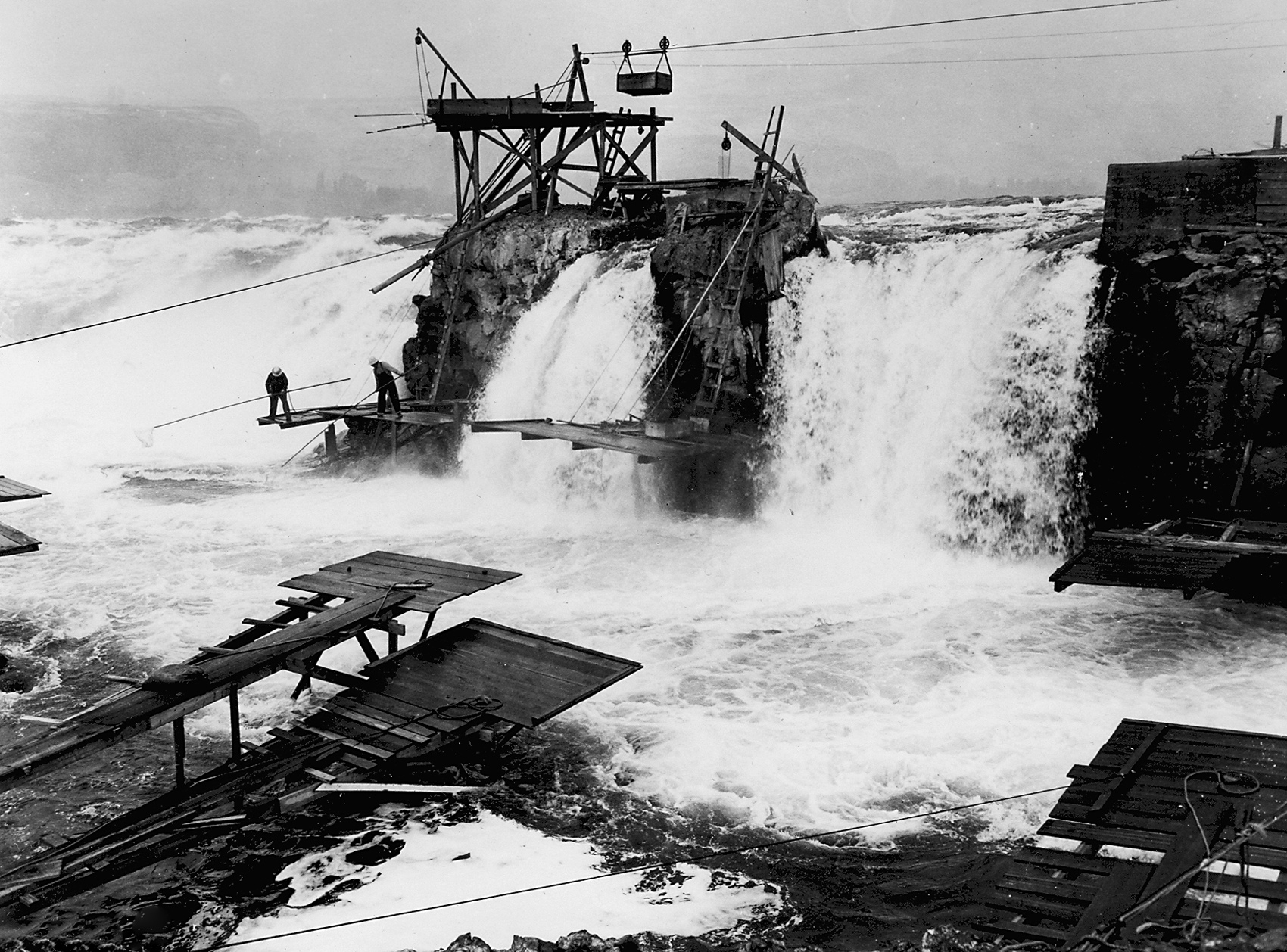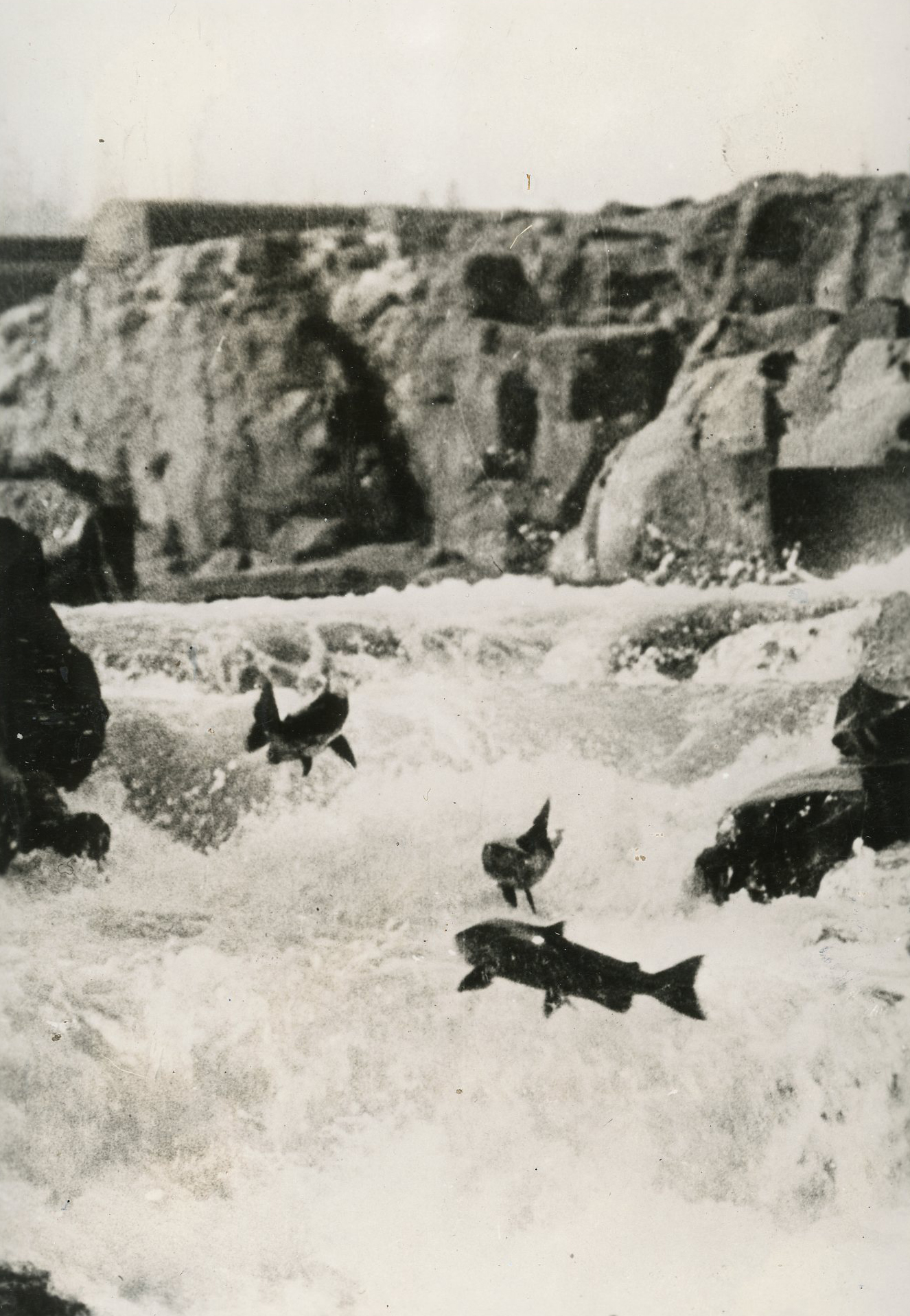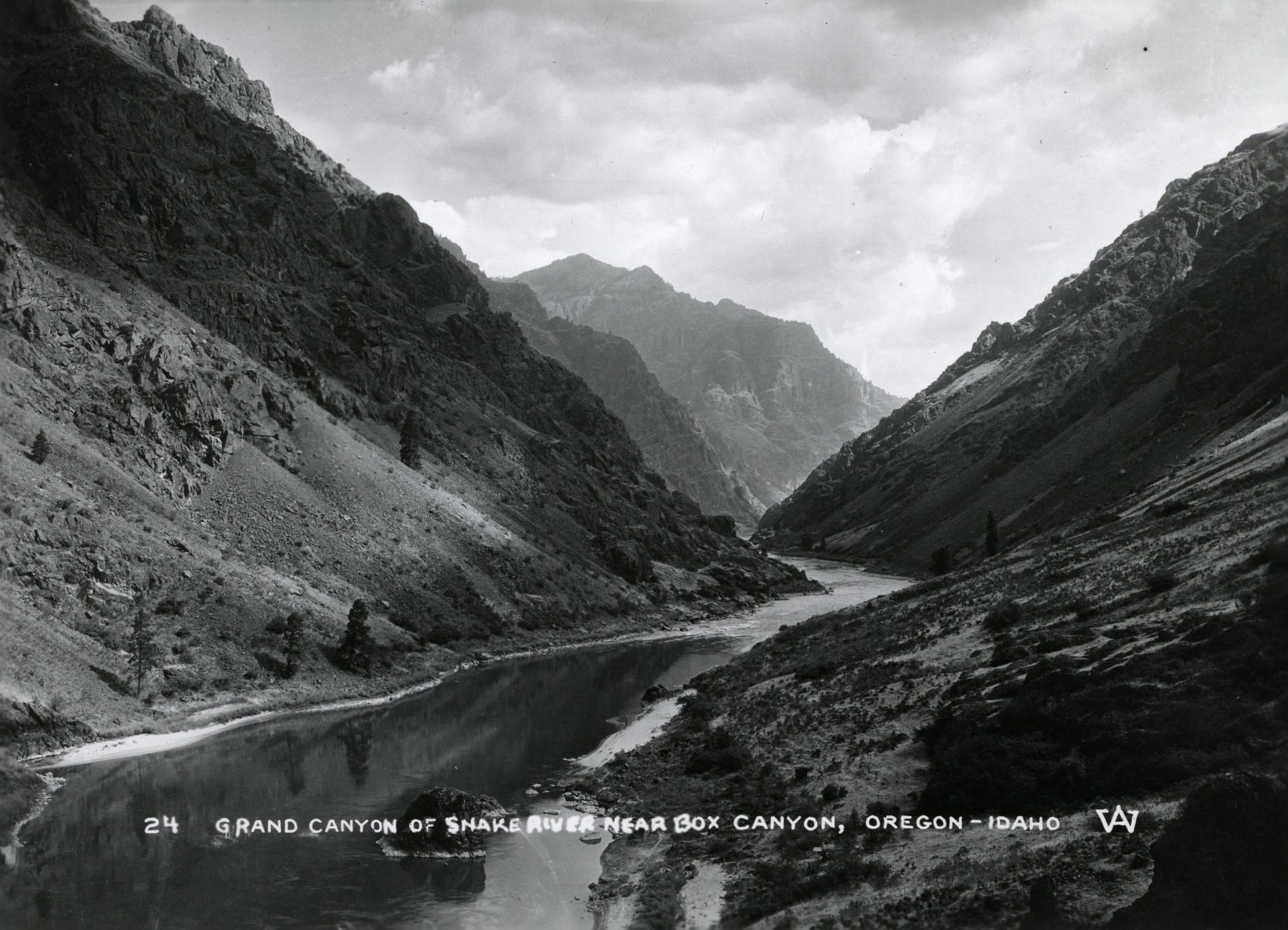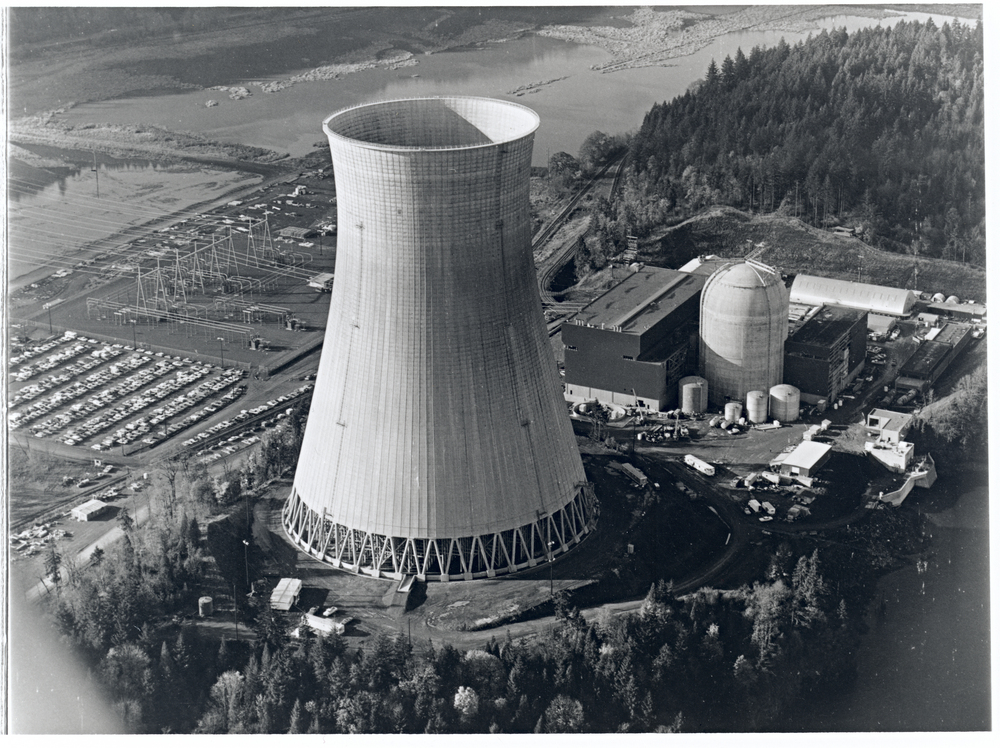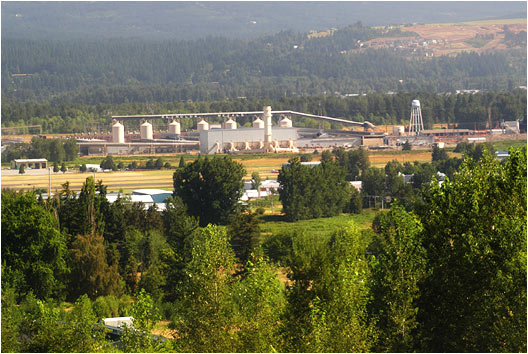In 1937, the impending completion of Bonneville Dam (1938) and progress on Grand Coulee Dam (completed 1941) required an agency to make use of the Columbia River’s hydropower. The Bonneville Power Administration, formed as an interim measure in anticipation of a regional administrative body like the Tennessee Valley Authority, has played a central role in the electrical energy system of the Pacific Northwest for over eighty years. Its basic function has been to transmit and market the power of the region’s 31 federal dams, several small nonfederal dams, and one nuclear power plant to over 140 power customers. Headquartered in Portland, the Bonneville Power Administration has been both a prized resource and a source of frustration and animosity for Oregonians.
Two foundational policies proved to be central to BPA’s role in the region. Despite pressure from Portland businesses looking for favorable access to Bonneville Dam’s electricity, BPA adopted the first policy, so-called postage stamp rates that would not vary with distance from the generating sources. The second policy—a preference for public and cooperative utilities—was contentious, especially in Oregon, where (unlike Washington) private utilities dominated.
For the first half of its existence, BPA was what historian Richard White called a “large and boring agency.” Bonneville and Grand Coulee Dams, along with other dams that came to comprise the Federal Columbia River Power System, supplied abundant hydropower at bargain rates. While private utilities objected to the agency’s preference for public utilities and there were periodic grumblings about exceptionally low rates for Direct Service Industries (primarily aluminum refiners), regional boosters equated low-cost electrification with prosperity and pushed consumers to use more and more energy.
Nuclear Power
By the 1960s, however, with electricity demand doubling each decade, BPA stakeholders began to worry that the region was running out of untapped hydropower and turned to coal and nuclear generation. At BPA’s behest, an advisory group in 1968 developed the ambitious Hydro-Thermal Power Program, which called for twenty large thermal-generating stations by 1990. Nuclear power would be the main source. By the mid-1970s, a small agency in Washington State, the Washington Public Power Supply System (WPPSS), planned to build five nuclear plants. Under a complicated financial arrangement, the BPA intended to take the power produced from three of those plants and secure the municipal bonds used to finance the project. With that plan, BPA’s story became less boring and more perilous.
By the late 1970s, the WPPSS projects were in deep financial trouble, and BPA had a major problem on its hands. The five nuclear plants were far behind schedule and over budget. Moreover, the demand for electricity never reached the projected growth rate, thereby invalidating the forecasts that had justified the construction of the plants. In the end, WPPSS completed only one project and defaulted on $2.24 billion in municipal bonds, at the time the largest municipal bond default in American history, a dubious distinction it held until 2008. The default saddled the Bonneville Power Administration and ratepayers with financing costs that still burden the region.
Northwest Power Act
Despite large BPA rate increases in 1974 and 1979, public power remained a relative bargain for ratepayers. For Oregonians served by private utilities, BPA’s preference for public and cooperative utilities remained a sore point, and politicians pressed to give ratepayers access to preference hydropower. In the end, a provision in the 1980 Northwest Power Act provided for rate relief through a Residential Exchange Program that BPA operated. In fiscal year 2018-2019, the program subsidized customers of private utilities by about $232 million.
The 1980 act also established the Northwest Power and Conservation Council, which wrought changes in the mission and methods of the Bonneville Power Administration. The act mandated the Council to produce and update a twenty-year regional energy plan, directed it to require BPA to prioritize conservation, and gave it the task of producing a fish and wildlife program that the BPA would implement.
The fish and wildlife provisions put responsibility on BPA to preserve and restore salmon and steelhead runs on the Columbia and Snake Rivers. In addition to their economic and recreational roles, the fish had profound meaning for Native Americans. The construction of The Dalles Dam in 1957 had destroyed traditional fishing grounds at Celilo Falls and left many Native people with a deep anger at the Bonneville Power Administration. By the late 1980s, the system’s dams had imperiled anadromous fish passage to a crisis point.
The Council, environmentalists, tribes, and the courts pressed BPA to spill more water over the dams, lessening the dams’ production of electricity. But increased spill rates alone did not solve the salmon crisis, and demands arose for the more drastic step of breaching four large dams on the Lower Snake River. Conflicts over breaching the dams came to a head around the turn of the twenty-first century, when Native American tribes and environmentalists clashed at a series of public meetings with farmers and shippers who opposed removing the dams.
BPA resisted demolition of the dams but broadened its fish restoration strategy to include habitat, hatcheries, and harvest practices, in addition to hydropower. President George W. Bush proclaimed in 2003 that no breaches of the Snake River dams were needed, but a series of opinions by U.S. District Court Judge James A. Redden expressed skepticism about the federal government’s proposed remediations. Although BPA’s approach to fish mitigation had uncertain effects, salmon and steelhead returns did begin to improve by about 1999. Numbers have dipped in recent years, but partial recovery has muted conflict between BPA—and its entrenched culture of power production—and groups committed to establishing a healthy ecosystem.
In one notable case, BPA funded the rewatering of the Umatilla River, which irrigators had drained in the summer since early in the twentieth century. In about 1980, the Confederated Tribes of the Umatilla Indian Reservation began an effort to restore salmon runs on the river. Their plan entailed diverting water from the Columbia to irrigators, who would then let CTUIR restore a stream flow that salmon would use. After years of conflict with irrigators, salmon returned to the Umatilla River in 1994 despite BPA’s hesitation to spend money on a river that was not part of the hydropower system and a challenge from WaterWatch of Oregon, which objected to farmers’ wasteful irrigation practices.
Challenges on the power side have also roiled the waters. Despite BPA’s advances in conservation, often at the prodding of the Northwest Power and Conservation Council, establishing an adequate and cost-effective mix of generating resources has been a decades-long struggle. The agency has pivoted between managing shortages and dealing with surpluses. Hydropower is BPA’s jewel in the crown, but by the 1990s the agency was acquiring thermal output from natural gas and Washington’s Columbia Generating Station in Richland, the only operating nuclear plant in the Northwest, which complicated BPA’s balance sheet and made energy-use projections and costs more unpredictable.
Deregulation of energy markets in the 1990s made BPA’s roller coaster ride steeper and more hazardous. Peter Johnson, BPA’s administrator during the WPPSS crisis, had declared in 1988 that he managed the agency as if it had “phantom competitors.” Now the competitors were real. BPA had begun as a counterweight to the failings of private utilities; now it mimicked corporate models, striving to become “market driven, customer focused, cost conscious and results oriented.”
The Intertie
By the turn of the twenty-first century, the Bonneville Power Administration was in crisis. Back in 1964, BPA had begun to build an intertie with the Pacific Southwest to exchange the Northwest’s surplus hydropower in the spring and early summer for wintertime electricity. The surplus in the 1960s resulted from the 1961 Columbia River Treaty with Canada, an arrangement that, when implemented in 1964, gave the U.S. Pacific Northwest power from water stored behind three large dams in British Columbia. The Intertie was a means to market that surplus by coordinating power resources and needs between the Northwest and Southwest.
The Intertie had worked well, but by the new century it had become a costly burden. As electricity shortages in California became severe, BPA was obliged to send power south—power that the agency more and more often had to buy at extraordinarily high prices. Meanwhile, BPA had signed long-term contracts with regional aluminum companies at cut-rate prices. During the crisis, in order to recapture some of that electricity, BPA was forced to buy back, sometimes at fifty cents a kilowatt-hour, power it had sold to Kaiser Aluminum for 2.3 cents. Spot prices for power that BPA had to pay soared even higher. Meanwhile, in addition to its operating expenses, the agency was obligated to pay off the bonds issued for the Supply System nuclear projects and to make its annual interest payment to the U.S. Treasury for federal investments in the region’s generating and transmission facilities. Failure to make the Treasury debt payments would anger politicians outside the region who believed the Northwest had benefited unfairly from federal largesse.
Although the crisis abated, BPA was financially strapped. Its customers faced a 46 percent rate hike, and aluminum production in the Northwest had come to a near-total halt. To improve its transmission system, BPA had to build new lines, often in the face of objections from environmentalists, and it had to wheedle financing authorizations from the federal government.
Transmission expansion was needed because of deregulation that allowed all regional power producers to use BPA’s wires. Early in the new century, the agency was the largest builder of transmission lines in the United States. Despite this, however, the ability of utilities to obtain their power on a deregulated market meant that demand for BPA’s services would fluctuate when its utility customers found cheaper electricity elsewhere. At the same time, the rise of renewables—notably wind power—posed new difficulties. Balancing supply and demand, as transmission systems must do, was a tricky job as more and more supply was dependent on unpredictable winds. In several instances, faced with a surplus, BPA opted to shut off wind turbines instead of curtailing hydro.
Looking Ahead
The evolution of the Bonneville Power Administration from a triumphal achievement of the early twentieth-century public power movement to a federal bureaucracy beleaguered by pressures for privatization and public doubts is reflected to some degree in the careers of some of its most important administrators. J.D. Ross had been a champion of public power and the leading figure in Seattle City Light, that city’s municipal utility. He became the administrator of the temporary agency that managed Bonneville Dam upon its completion in 1937 and served until illness struck in 1939. Charles Luce held the post under Presidents Kennedy and Johnson and pushed the agency to expand its scope with the Pacific Intertie and by advocating for nuclear power. He went on to serve as the CEO of New York City’s giant Consolidated Edison, reflecting the narrowing gap between public and investor-owned utilities. Don Hodel, a Nixon appointee who served from 1972 to 1977, steered BPA toward close involvement with the WPPSS nuclear projects while largely disregarding calls for energy conservation and renewables. He went on to hold two cabinet positions in the Reagan administration and became a leading figure in the right-wing evangelical Protestant movement.
The challenges of the twenty-first century—providing reliable power, protecting fish and wildlife, and responding to global warming while maintaining financial and operational stability—have produced a somewhat chastened Bonneville Power Administration. The agency remains large, with over fifteen thousand miles of transmission lines and nearly three thousand employees serving a regional population nearing fourteen million. But rather than seeking to dominate the Pacific Northwest's power system, BPA has focused on supplying its preference customers with its most valuable resource, electricity from the Northwest’s thirty-one federal hydroelectric power dams.
A 2013 scandal involving BPA’s Human Resources Department, which disobeyed Department of Energy policy on veterans’ preference in employment, tarnished the agency’s image. Since the Reagan administration, Republican administrations have floated plans for privatizing BPA by selling off its transmission system. The Trump administration’s first budget also has proposed privatizing BPA. Regional politicians, both Republicans and Democrats, have consistently rallied to the agency's defense, but BPA's future as a federal agency is unsettled. What is certain, however, is that battles will continue over control of the electricity generated by the Northwest’s falling water.
-
![]()
Linesman for the BPA.
Courtesy Oregon Hist. Soc. Research Lib., 020394
-
![]()
The BPA Columbia River Power System map, 1948.
Courtesy Oregon Hist. Soc. Research Lib., Dept. of the Interior map, drawer 17, folder 1
-
![]()
Land of Opportunity, BPA, 1944.
Courtesy Oregon Hist. Soc. Research Lib., drawer 17, folder 1
-
![]()
J.D. Ross, 1937.
Courtesy Oregon Hist. Soc. Research Lib., Journal Coll. 014568
-
![]()
Charles F. Luce, Head of BPA, 1961.
Courtesy Oregon Hist. Soc. Research Lib., Journal Coll. 012390
Related Entries
-
![Bonneville Dam]()
Bonneville Dam
The U.S. Army Corps of Engineers built and operated Bonneville Lock and…
-
Celilo Falls
Celilo Falls (also known as Horseshoe Falls) was located on the mid-Col…
-
![Columbia River]()
Columbia River
The River For more than ten millennia, the Columbia River has been the…
-
![Salmon]()
Salmon
The word “salmon” originally referred to Atlantic salmon (Salmo salar),…
-
![Snake River]()
Snake River
The Snake River has its headwaters at an elevation of 8,200 feet on the…
-
![The Dalles Dam]()
The Dalles Dam
The United States Army Corps of Engineers constructed The Dalles Dam be…
-
![Trojan Nuclear Power Plant]()
Trojan Nuclear Power Plant
The Trojan Nuclear Power Plant, located in Columbia County about twelve…
-
![Troutdale Aluminum Plant]()
Troutdale Aluminum Plant
In November 1941, bulldozers advanced into the green meadows of the Sun…
-
![Woody Guthrie and the Columbia River]()
Woody Guthrie and the Columbia River
It is sometimes hard to believe that one month in the life of a twenty-…
Related Historical Records
Map This on the Oregon History WayFinder
The Oregon History Wayfinder is an interactive map that identifies significant places, people, and events in Oregon history.
Further Reading
Columbia River History Project. “Bonneville Power Administration: Electricity,” “Bonneville Power Administration: History,” “Energy Crisis of 2000/2001,” “Intertie,” “Northwest Power Act,” “Salmon and Steelhead,” “WPPSS.” Northwest Power and Conservation Council, accessed November 29, 2017. https://www.nwcouncil.org/history/index/.
Johnson, Peter T. “Why I Race against Phantom Competitors.” Harvard Business Review 66:5 (September-October 1988): 106-12.
Tollefson, Gene. BPA and the Struggle for Power at Cost. Portland, Ore.: Bonneville Power Administration, 1987.
United States, Bonneville Power Administration. Power of the River: The Continuing Legacy of the Bonneville Power Administration in the Pacific Northwest. Portland, Ore.: Bonneville Power Administration, 2012.
White, Richard. The Organic Machine. New York: Hill and Wang, 1995.



